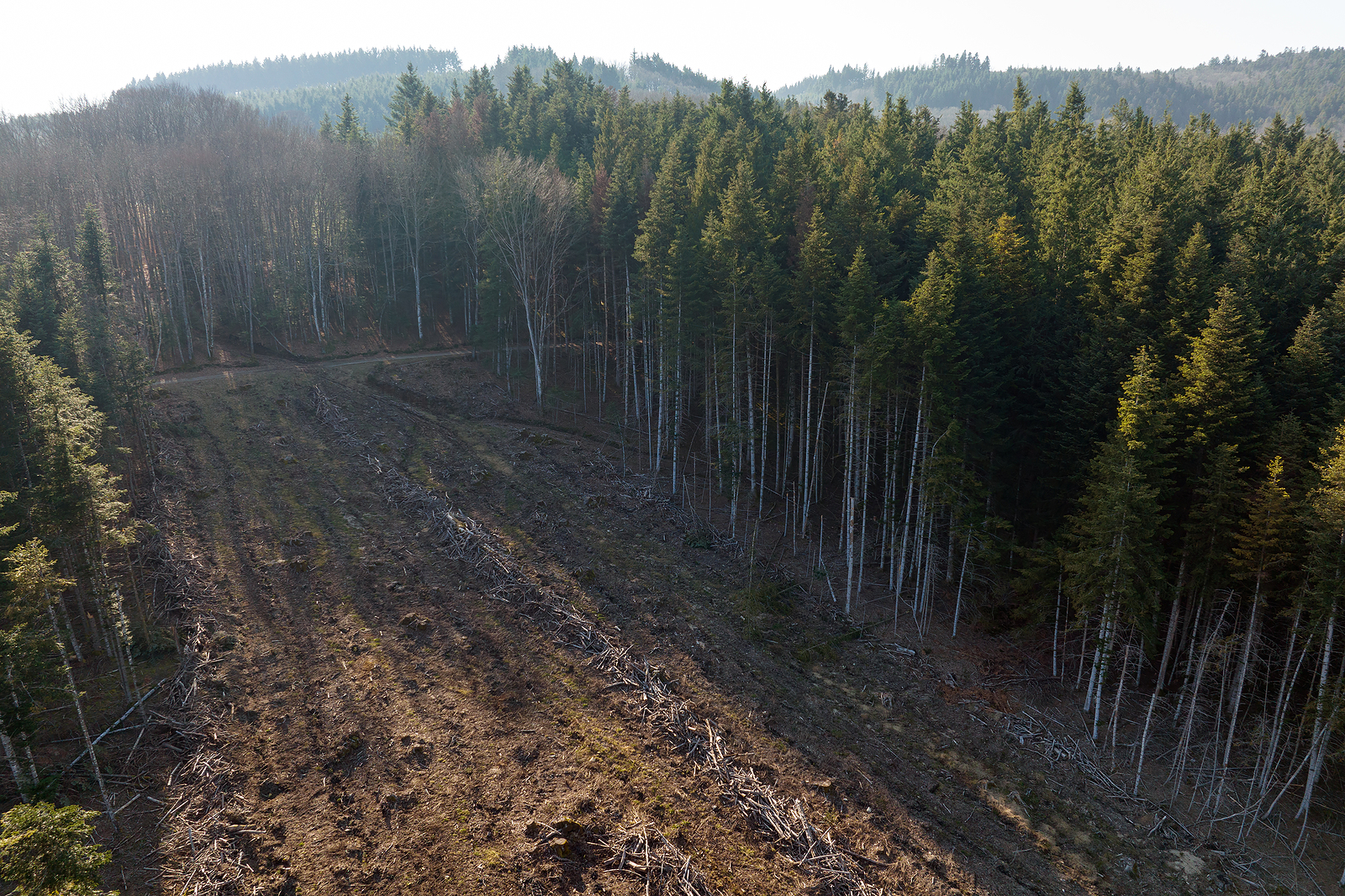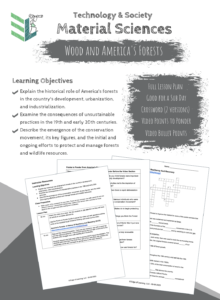
Aerial view of pine forest with large area of cut down trees as result of global deforestation industry. Harmful human influence on world ecology.

Wood, a natural, renewable resource, has played an integral role in shaping the development and growth of the United States throughout its history. With vast forests stretching across the continent, wood was used extensively by Native American tribes for constructing shelters, tools, weapons, and art. As European settlers arrived, they harnessed the abundant timber resources to build homes, forts, and ships, eventually establishing thriving lumber industries. In the 19th and early 20th centuries, wood framed the iconic American frontier, as log cabins and wooden railroads epitomized westward expansion. In modern times, wood remains an essential material in construction, furniture, and paper industries, with a focus on sustainable forestry practices to ensure its continued availability for future generations.
FEATURES
• Full Class Lesson Plan
• Perfect for a Sub Day!
• Crossword (2 versions)
• Video Points to Ponder
• Bullet Point Video Summaries
• Part of the Technology & Society: Material Sciences unit

LEARNING OBJECTIVES
• Explain the historical role of America’s forests in the country’s development, urbanization, and industrialization.
• Examine the consequences of unsustainable practices in the 19th and early 20th centuries.
• Describe the emergence of the conservation movement, its key figures, and the initial and ongoing efforts to protect and manage forests and wildlife resources.